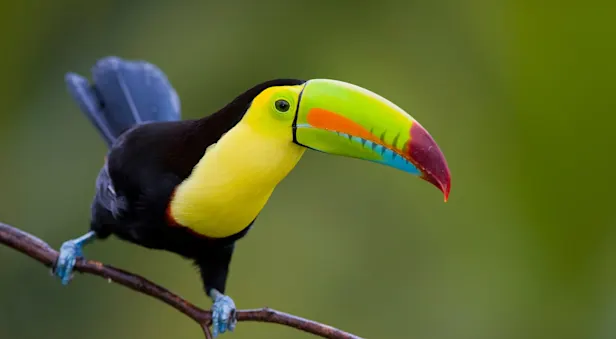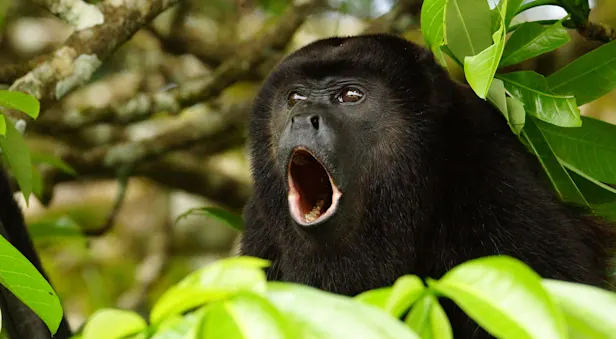
Know Before You Go
Howler Monkey Facts | Costa Rica Wildlife Guide
Howler monkeys inhabit the forests of Central and South America and produce one of the loudest vocal sounds of any land animal, from which their name derives. They are one of the largest New World monkeys and are the most abundant species of monkey in Central America.
PHYSICAL CHARACTERISTICS
Side-opening, wide nostrils on their short snout.
They lack rump pads, as Old World monkeys have.
Their prehensile tail is used as an extra arm to grip or hang from branches.
They have beards and long, think hair that may be brown, red or black, with brown or blond saddles.
Can weigh up to 22 pounds.
The head and body can be up to 3 feet long, and the tail can be another 3 feet.
The neck and lower jaw are big, in order to house their super-sized vocal cords.
RANGE AND HABITAT
Howlers inhabit both lowland and mountain habitats. Fortunately, they are less susceptible to the effects of habitat destruction than their relative the spider monkey and often cling precariously to trees in many relic patches of forest. They live up to 7,000 feet from southern Mexico to northwestern South America.
BEHAVIOR AND COMMUNICATION
Every child in Costa Rica learns how to imitate the sounds of howler monkeys. It’s tradition. And while howlers are not particularly aggressive, they definitely sound the part! The thunderous males address each other every morning with a guttural sound more similar to a lion’s tremendous roar than the calls of a small, tree-dwelling folivore. The spine-tingling cries can carry as far as 3 miles in even the densest jungles. They call out once more at dusk and will also howl if a trespasser comes too close, as a way of keeping rivals at a safe distance.
Their powerful vocal calls are produced by their overly large larynx and throat, which balloon outward, inflating and resonating. Females have loud wails and groans that usually signal distress or calling a stray infant.
They live and travel in troops of 4 to 19 members, each having its own territory in which it feeds and lives; the size of the territory usually ranges between 3 to 25 acres. Generally, members of the group are not related because members of both sexes leave the group before becoming sexually mature.
HOWLER MONKEY DEVELOPMENT

Most of the time, howlers rest, due to the low-energy diet of foliage. They are diurnal and will move around or socialize, but only for about 45 minutes each day. When resting, they grasp branches with their tails, which can hold all of their body weight.
FEEDING HABITS
This noisy yet sedentary canopy browser is capable of eating anything that grows; however, it is mostly folivorous—a foliage eater. Up to 75 percent of its diet consists of leaves, flowers and fruit. Howlers are very selective about what sorts of foliage they eat, preferring young leaves from ficus trees that are more sweet and moist. Young leaves are also easier to digest, and they contain fewer toxins than more mature leaves. When available, howlers will eat more fruit than leaves.
BREEDING AND REPRODUCTION
Howlers are polygamous, meaning usually the alpha male has several mates. Other lower-ranking males sometimes have the opportunity to mate, though not always. The alphas maintain their status for up to three years, during which time they may father up to 18 infants. Following a gestation period of 186 days, the female will have her first infant before her fourth year. Howlers breed year-round, and adult females typically give birth every 19 to 23 months.
CONSERVATION
The biggest threat to howler monkeys is habitat loss due to clear cutting and logging. In many forests, howlers experience fragmented corridors, which prevents them from moving freely from tree to tree. This may force them to relocate to areas that are less habitable. The major problem with forest fragmentation, in addition to limiting food sources, is the forest is not reseeded. Howlers play an important role in reseeding forests. As they eat and travel through the canopy, they drop seeds or brush against them, or seeds may pass through their digestive system, falling to the forest floor.
































